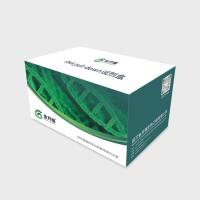Analysis of Neuroketal Protein Adducts by Liquid Chromatography-Electrospray Ionization/Tandem Mass Spectrometry
A role of free radicals has been implicated in the pathogenesis of a number of neurological disorders, including amyotrophic lateral sclerosis, Huntington’s disease (HD), Parkinson’s disease (PD), and Alzheimer’s disease (AD) (1 –9 ). Furthermore, reactive aldehydes produced as products of lipid peroxidation are thought to be key mediators of oxidant injury because of their capacity to covalently modify proteins and DNA (10 ), and evidence suggests they may be involved in the pathogenesis of neurodegenerative diseases (11 –13 ). Aggregated cross-linked proteins are characteristic features of neurodegenerative diseases (14 ). Isoprostanes (IsoPs) are prostaglandin-like compounds formed by free radical-induced peroxidation of arachidonic acid (15 ). We recently identified the formation of highly reactive γ-ketoaldehydes, now termed isoketals (IsoKs), as products of the IsoP pathway (16 ). IsoKs are orders of magnitude more reactive than other known reactive products of lipid peroxidation and exhibit a unique proclivity to cross-link proteins (17 ). Neuroprostanes (NPs) are IsoP-like compounds formed from oxidation of docosahexaenoic acid (DHA) (5 ), which is highly enriched in the brain (18 ,19 ), and levels of neuroprostanes in cerebrospinal fluid (CFS) have been found to be increased in patients with AD (5 ). Analogous to the formation of IsoKs via the isoprostane pathway, we recently identified the formation of another class of highly reactive γ-ketoaldehydes as products of the neuroprostane pathway, termed neuroketals (NKs) (20 ).
![]()






